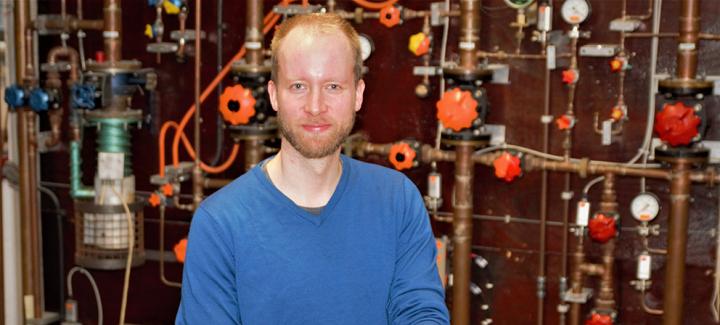
Credit: Lancaster University
Lancaster University’s Dr Samuli Autti has been awarded a Young Scientist Prize 2020 by the International Union of Pure and Applied Physics.
The prestigious prize, awarded only once every three years, was made by the Low Temperature Commission of the IUPAP.
He said he was delighted to have been awarded the prize.
“Science has always been close to my heart. While experimental physics requires hard work, it has also provided me with a journey to the wonders of Nature, which I have enjoyed beyond all my expectations.”
This is not Dr Autti’s only honour during his time at Lancaster. In 2019 he was chosen to attend the 69th Lindau Nobel Laureate Meeting, the annual gathering in Germany bringing 580 outstanding young scientists to meet more than 40 Nobel Prize Winners.
“That was truly an experience I will never forget – it was fascinating to meet so many brilliant minds.”
Dr Autti is currently working as a post-doctoral researcher in the Department of Physics, where his work is focused on experiments at ultra-low temperatures, which involves cooling helium to near absolute zero to produce a ‘superfluid’. Superfluids are traditionally used to explore Quantum Physics, with vast potential for applications such as computing, technology, and security.
His research concentrates in particular on superfluid helium-3 (the rare light isotope of helium). His first major contribution, recognised by the award, is the observation of half-quantum vortices, which were proposed as long ago as 1976, but had to await a vain 40-year hunt by many groups until their final discovery by Dr Autti and his colleagues.
Vortices in quantum fluids are normally associated with a single quantum, but the complex structure of superfluid helium-3 quantum fluid, in very special circumstances, allows half-quantum vortices to exist.
His second major observation is the recognition that the long-lived precessing spin domains found in superfluid helium-3, can act as the “time crystals” proposed by Nobel Laureate, Frank Wilczek in 2012. In a conventional crystal, the crystal structure repeats in space, but remains unchanged in time. In a “time” crystal the structure also repeats periodically in time as well as in space, and it was this behaviour which was observed by Dr Autti and his co-workers.
###
Media Contact
Gillian Whitworth
[email protected]




